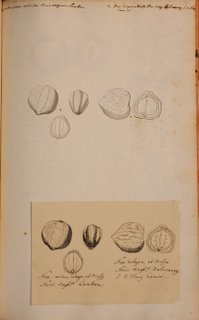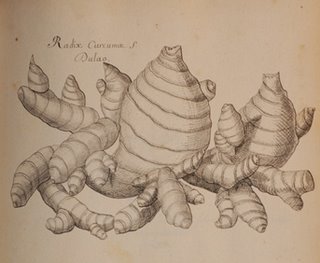
Bro. Josef George Kamel
(21 April 1661- 2 May 1706)
Camachile (kamonsil in Visayan) is associated with the dry and hot months of summer. This tart and pungent fruit, more legume than fruit, was on sale at the roadside stalls and public markets in Iloilo, when I visited the province last April.
This pen and ink drawing of the camachile was drawn by a Jesuit more than three hundred years ago.
In 1706, on 2 May, a Jesuit of extraordinary talent died in Manila. He was Josef Georg Kamel. He was 45 years of age. He was not Spanish but Moravian born on 21 April 1661 in Bruno or Brun, today in the Czeck Republic. He was not ordained priest but remained a brother or hermano all his life; a temporal coadjutor as the Jesuit Constitution would classify him.
Like most of the hermanos, Kamel was counseled to live the hidden life in imitation of Jesus and the hermano's patron saint, Joseph. They were to find their sanctification amidst the pots and pans of the pantry or in Kamel’s case in the herb garden and infirmary with its poultices, ungents, potions and powders. What we know of Kamel is not enough to satisfy our curiosity. The laconic Catalogus personarum, the annual list of assignments given to Jesuits, tells us that Kamel joined the Jesuit province of Bohemia on 12 November 1682; that he arrived in the Philippines 1697; after he had made his final vows as temporal coadjutor on 15 August 1696. He was assigned to the Colegio de Manila also known as Universidad de San Ignacio and after being active for less than a decade died in Manila on 2 May 1706. We presume he was buried in Manila, possibly within the San Ignacio church, which was the custom.
In the short span of nine years, Kamel placed the Philippines in the world map of science. Aside from running an efficient pharmacy, which served not only the Jesuit community, the resident students of San Ignacio and the neighboring seminary of San José and the general population of Manila, especially the poor, Kamel must have improved its services as he kept in touch with local knowledge of the healing properties of plants. This fact we can glean from the accurate yet expressive drawings he has left behind of about 270 plant specimens and of the notations about their medicinal properties. Dela Costa, following Pedro Murillo Velarde's 1749 history of the Jesuits in the Philippines, states that Kamel was, in fact, responsible for establishing the pharmacy. Under Kamel, the pharmacy played an active role during a plague that hit Manila. Kamel was also responsible for sending medicines to the Visayan missions, of which he had great affection.
Not content with studying the local flora of the Philippines, Kamel maintained an active correspondence with the leading botanists and taxonomist of his days James Petiver and John Ray. Recognizing the extraordinary research of this eastern European brother stationed at the farthest reaches of the Spanish empire, John Ray of the British Royal Society, appended Kamel’s research to the monumental Historia plantarum, which Ray was putting together. With this appendix, the fruit of an inquiring and observant mind, Josef George Kamel placed the Philippines in the world’s botanical map.
To honor Kamel, Karl Linneaus named the flowering Camellia after him.




